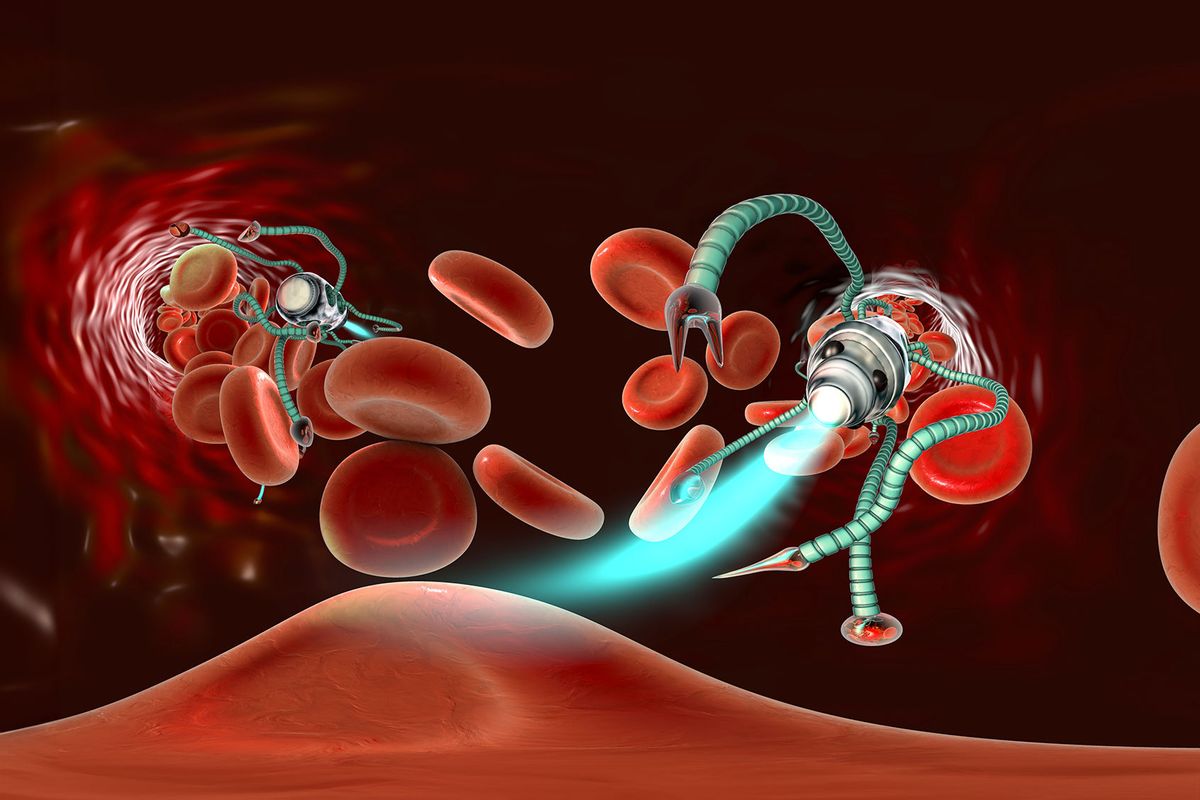Development and Safety Concerns of Nanoelectronics for Medical Use
Concetti Chiave
Nanoelectronics are revolutionizing healthcare by offering personalized medicine and innovative treatment options, but challenges such as immune response and communication with external sources need to be addressed.
Sintesi
Nanoelectronics, at one-billionth of a meter in size, have immense potential in transforming healthcare. The global nanotechnology market is booming, with applications ranging from medicine to environmental science. Researchers are exploring the use of ultra-tiny devices like anthrobots derived from human tissue to treat diseases without triggering an immune response. Challenges remain in targeting specific tissues, communicating externally, and managing vast amounts of data generated by these devices. Despite the hurdles, the fusion of nanotechnology and cells holds promise for groundbreaking applications beyond healthcare.
Micro-medical machines like "The Magic Schoolbus" are being developed, but safety concerns remain
Statistiche
The global nanotechnology market is valued at $57 billion today.
The industry is predicted to triple by 2028.
MRI contrast agents composed of magnetic nanoparticles are used in medicine.
Moderna and Pfizer utilized nanotechnology in developing mRNA vaccines.
Citazioni
"We are going to be able to personalize medicine and repair tissues in ways that we were never able to do before." - Dr. Sylvia Daunert
"If you can program these things to specifically target and attack a tumor or enter the brain and somehow mitigate the effects of Alzheimer’s, these are problems we just don’t know how to address right now." - Brian Timko
Approfondimenti chiave tratti da
by alle www.salon.com 12-15-2023
https://www.salon.com/2023/12/15/micro-machines-like-the-magic-schoolbus-are-being-developed-but-safety-concerns-remain/
Domande più approfondite
How might the fusion of nanotechnology and cells impact fields beyond healthcare?
The fusion of nanotechnology and cells has the potential to revolutionize various fields beyond healthcare. In environmental science, nanoparticles can be utilized for purposes such as developing more efficient solar panels. In computer science, advancements in nanoelectronics have already played a significant role in shrinking down large computers to handheld devices. Moreover, the integration of nanotechnology with artificial intelligence could lead to the creation of unique living hybrid robots with applications across different industries. These living hybrid robots could open up new possibilities in areas like environmental monitoring, industrial processes, and even space exploration.
What counterarguments exist against the use of nanoelectronics for medical purposes?
Despite their promising applications in medicine, there are several counterarguments against the use of nanoelectronics for medical purposes. One major concern is related to safety issues associated with introducing foreign objects into the human body at such a small scale. There is a risk that these ultra-tiny devices may trigger immune responses or accumulate in organs and lymph nodes, leading to adverse effects on health. Additionally, questions remain about how these devices can be effectively targeted to specific tissues within the body without causing unintended harm or interference with normal bodily functions.
How can advancements in nanotechnology influence ethical considerations surrounding human augmentation?
Advancements in nanotechnology have significant implications for ethical considerations surrounding human augmentation. As technology progresses towards developing nano-sized devices that can interact with biological systems at a cellular level, ethical dilemmas arise regarding issues like informed consent, privacy concerns, and potential misuse of this technology for enhancing human capabilities beyond therapeutic purposes. The ability to manipulate human biology at such a minute scale raises questions about where boundaries should be drawn between enhancement and alteration of natural traits. Furthermore, ensuring equitable access to advanced technologies derived from nanotechnology becomes crucial in addressing disparities related to enhanced abilities among different socioeconomic groups.
0
